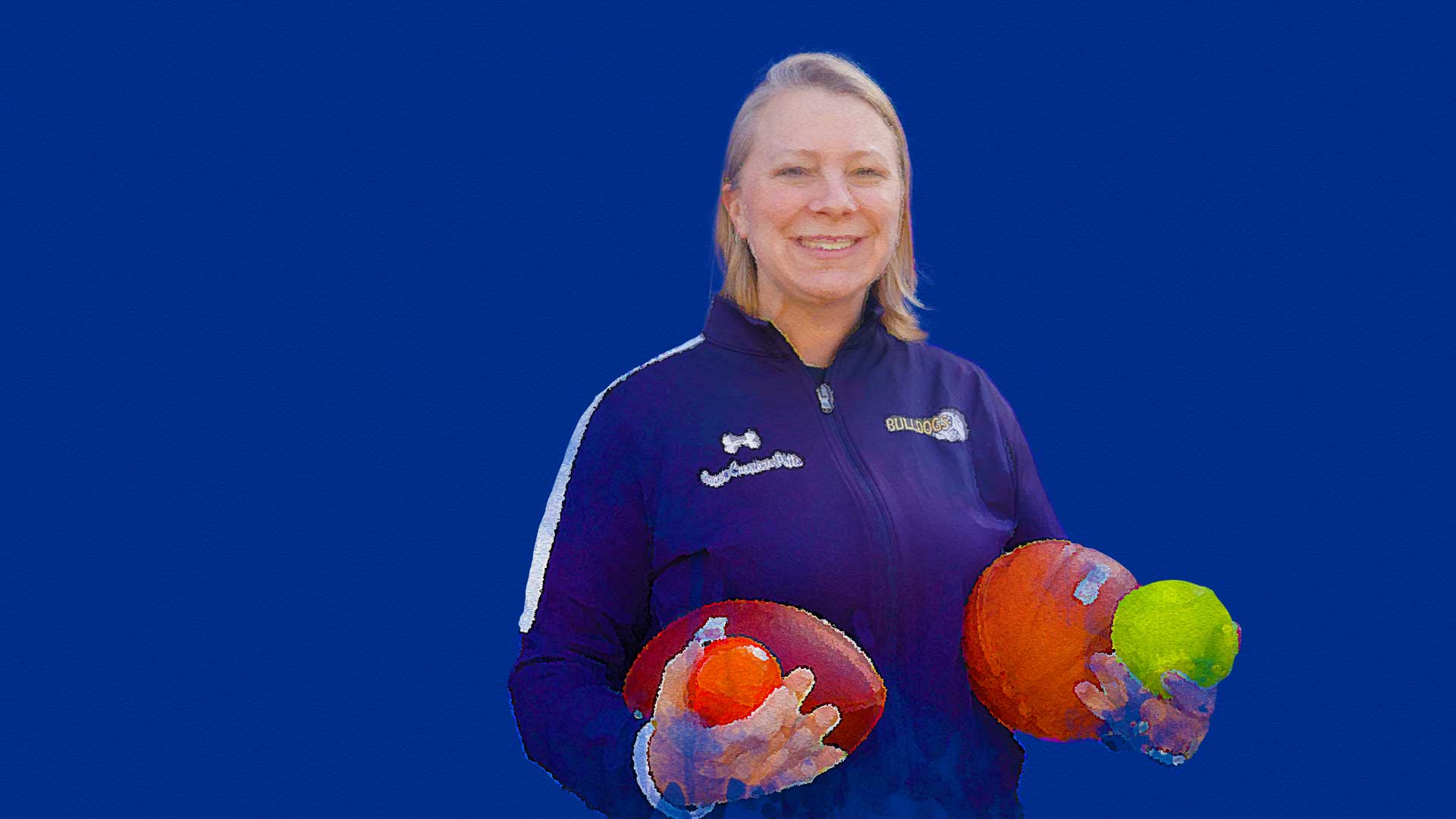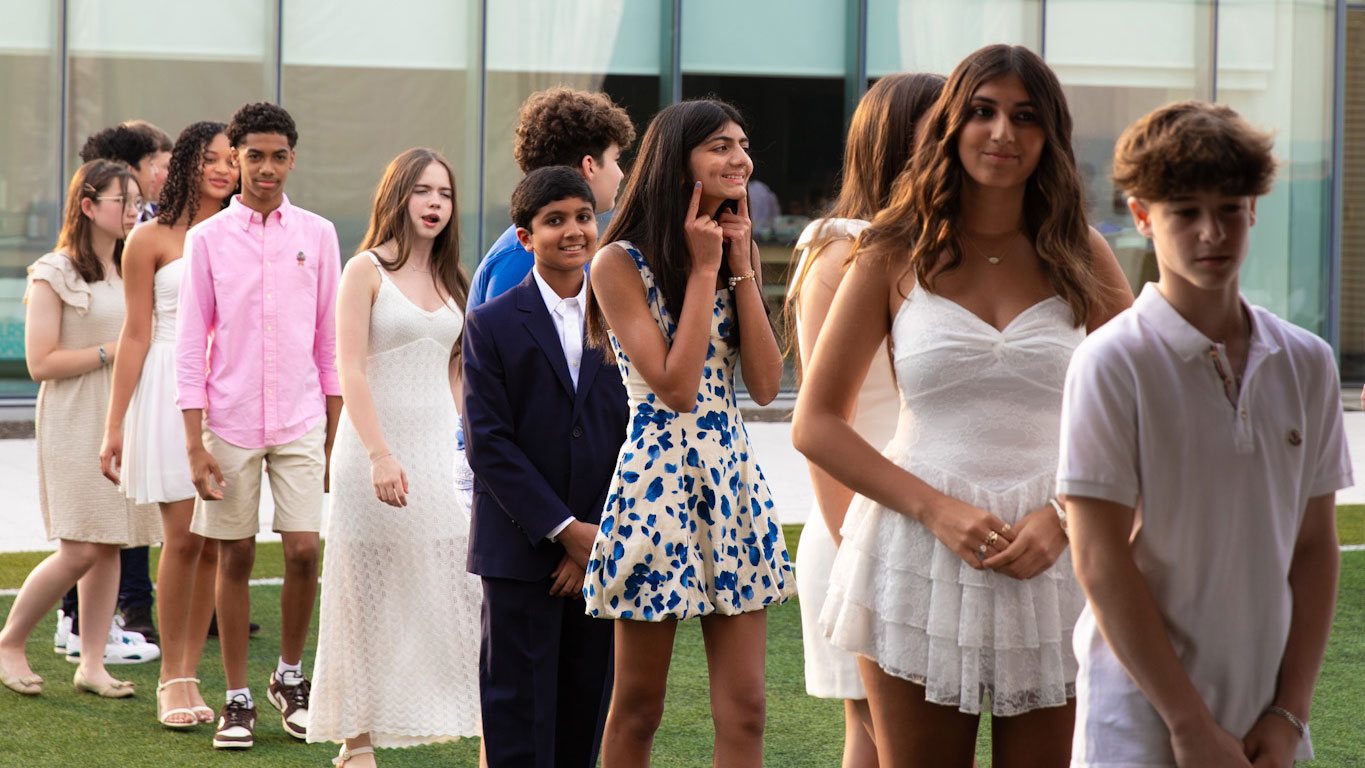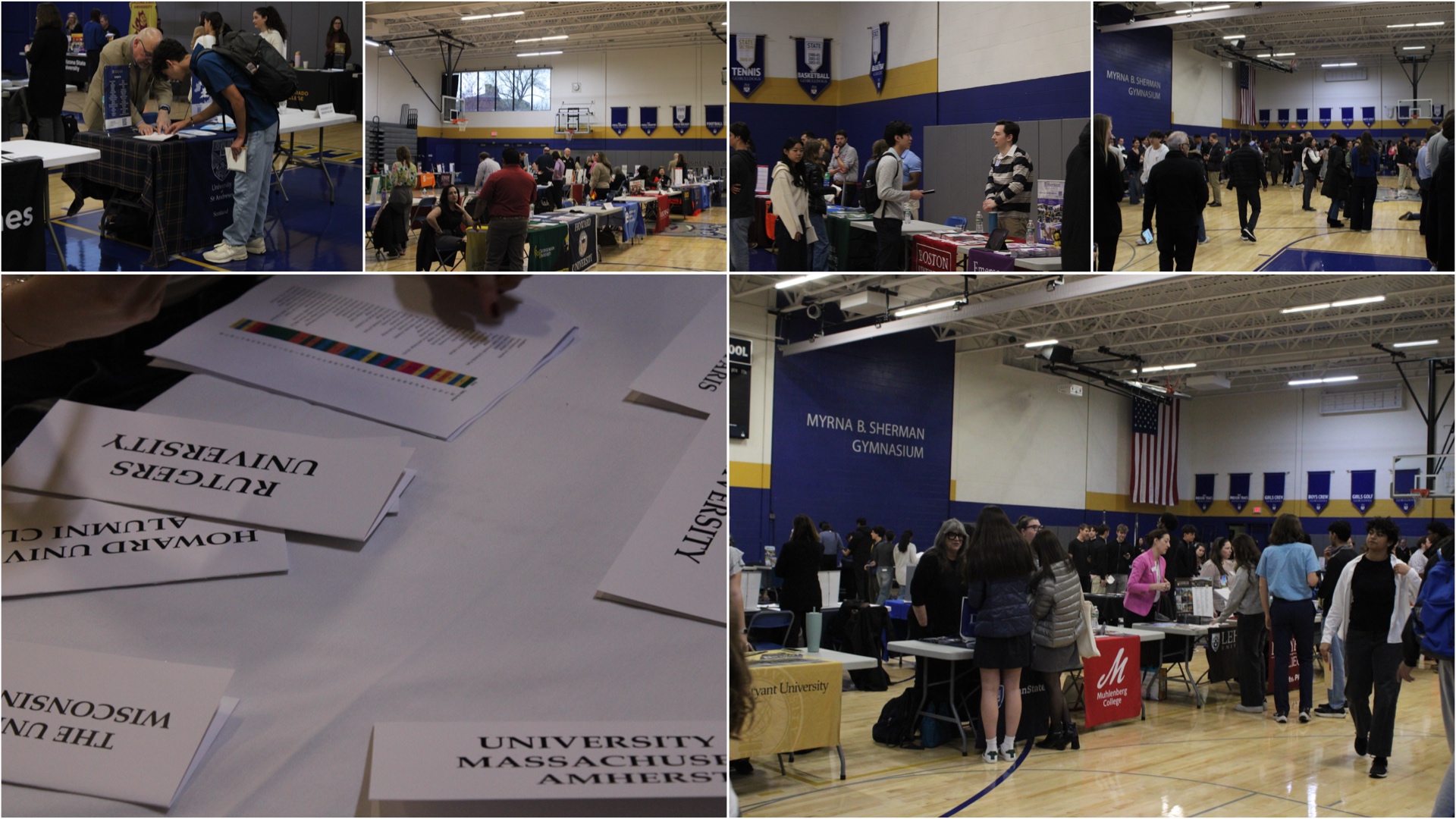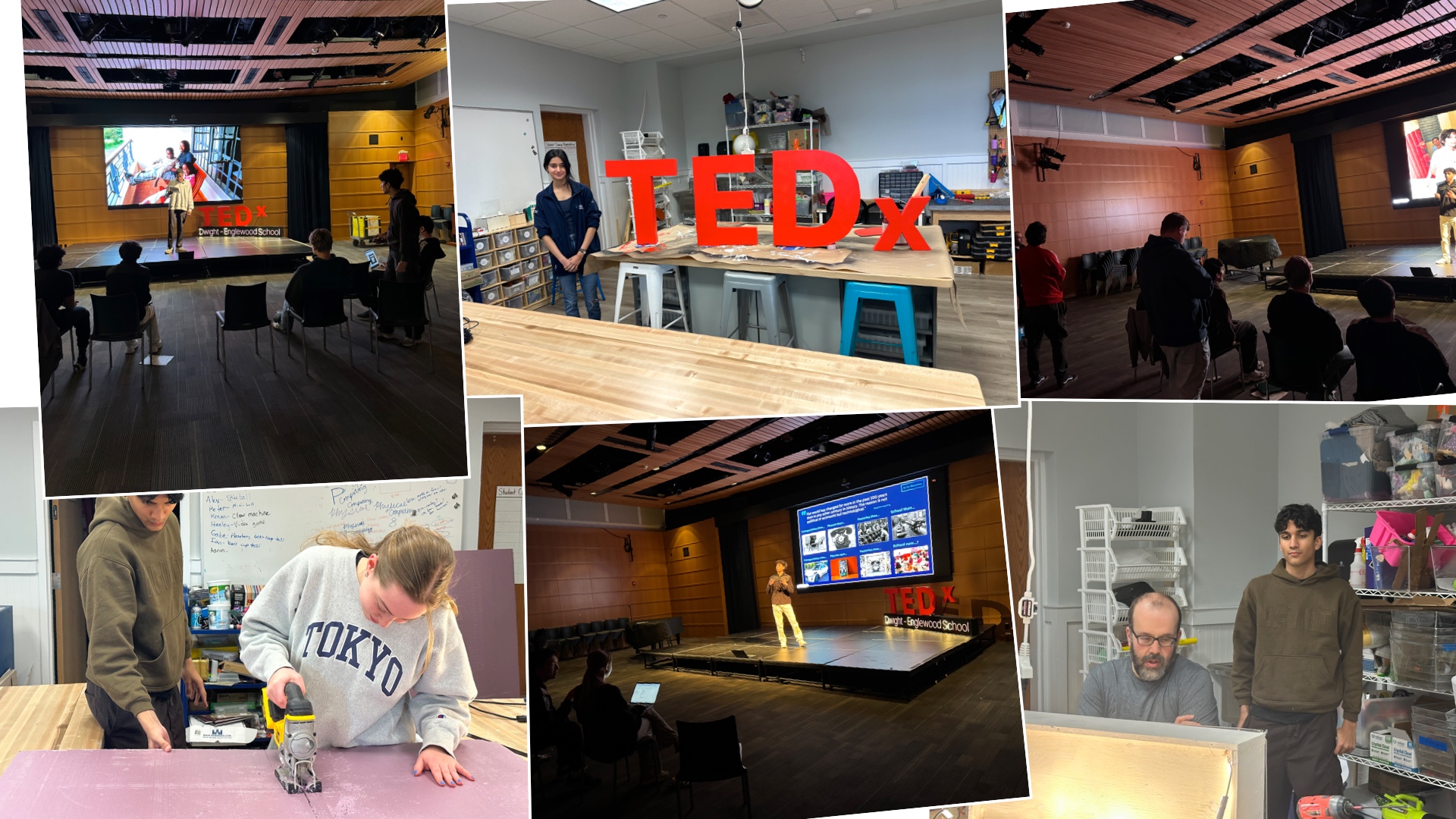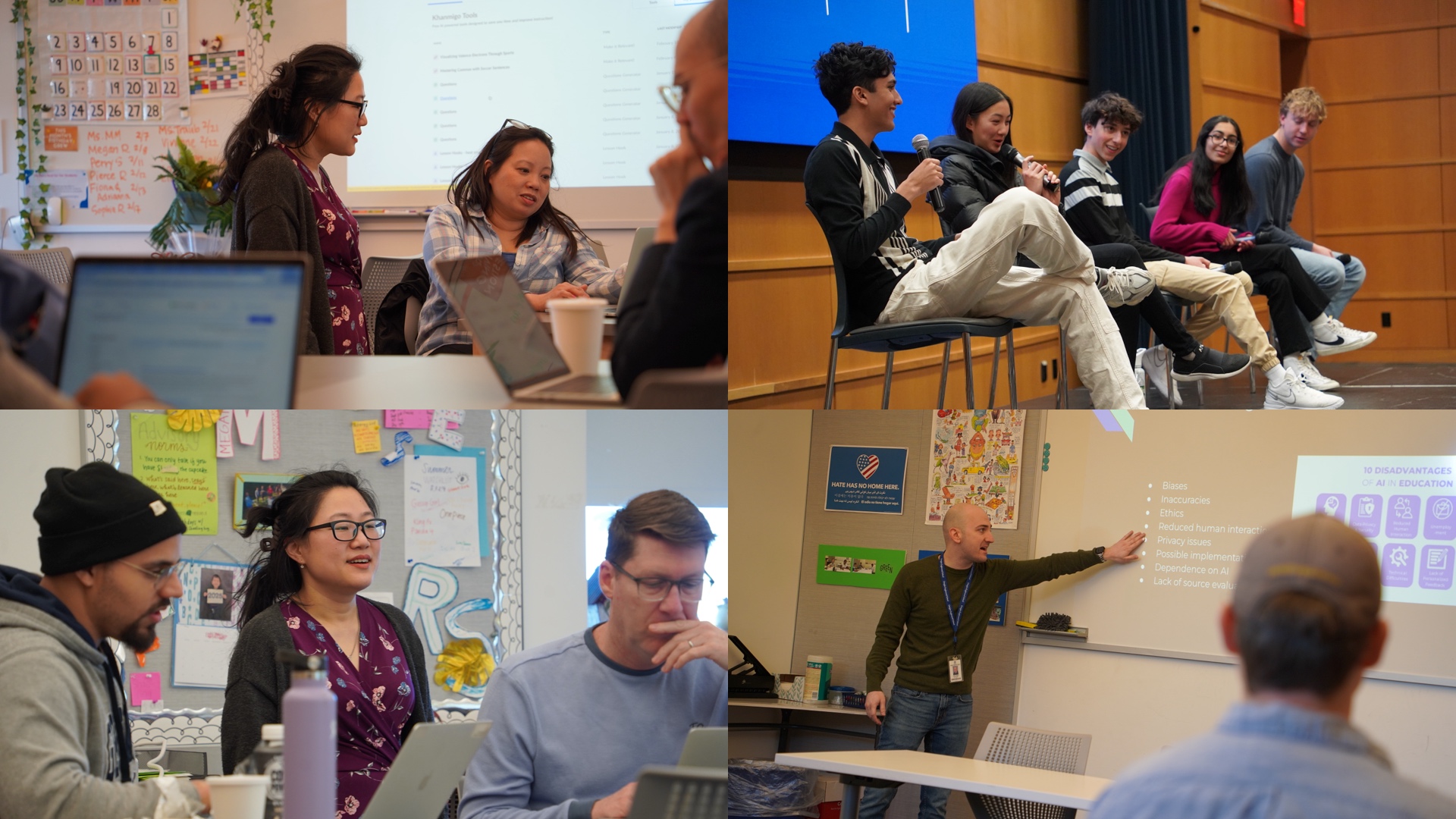Tell us a bit about yourself, your background, and your journey here at D-E.
During undergrad at Michigan State University I was initially a music education major and I had also received a scholarship for field hockey. I later transferred to be a kinesiology major and then received my master’s degree in physical education, sports administration, and coaching from Montclair State University, which is how I landed in New Jersey. When I started at D-E in 2008, I was hired right out of grad school. I began as a Health and Wellness teacher and also coached field hockey, strength and conditioning, and softball, and have continued to be a 3 season coach for the past 16 years.
At the time, physical education (now health and wellness) teachers weren’t expected to be advisors, or go to the morning meetings and assemblies. We’ve become a lot more involved in school life and programming throughout the school. Additionally, we all coach an after school sports team. So over time, we’ve been immersed more in the community and have been involved in a lot more of the day-to-day lives of the students, not just as health and wellness educators but being able to educate the whole student and having more of an impact.
What has your experience been as a department chair?
This is my seventh year as chair. Being chair during COVID was really a creative leadership opportunity. We had to create a whole new curriculum that could be delivered in a safe way. It was a challenge to think about ways to use equipment, on top of the fact that gyms were being used to house students for lunch. But we envisioned a whole new curriculum, and when we returned for hybrid we continued to figure out ways to keep kids moving and also teach them important skills they needed to have.
When I became chair, there was a shift of graduation requirements from 8 semesters to 4 semesters. We removed the “athletic option” for students and created an elective program. I did a lot of research when evaluating the curriculum to come to find out that most students who participate in team sports in high school do not participate in team sports once they graduate. So what else can they latch on to that’s going to keep them physically active for the rest of their lives? That was kind of the focus of creating our elective program, so we can expose them to other activities that they can continue in college and beyond.
While they are here, student athletes might participate in one, two, or three sports, so we want to support their growth as athletes. So, in collaboration with the Athletics Department we are looking to grow the human performance program. I’ve run the strength and conditioning program in the winter, which is an after school program, but we are hoping to expand this opportunity in the Fall and Spring. We want to provide a space for our in season and out of season athletes to strength train and program conditioning into their workouts under the supervision of a certified strength and conditioning coach. The goal is to provide an additional tool to help enhance athletic performance, reduce injury, and teach the importance of recovery, sleep, and nutrition habits.
What are the goals of the Health and Wellness Department?
The most important goal is making each class an inclusive and safe learning environment for every student, with an understanding that students come into our classes with many different athletic and non-athletic experiences and backgrounds.
We have to meet students where they are and help them develop the skills necessary in order to participate in the class. We’re trying to go from a traditional PE model into one that is more inclusive. Instead of just teaching athletic skills in sports such as basketball, soccer, football and volleyball, we are also trying to support the values and the HumanEd skills within our school. We are now offering more activities that support lifelong activity for all our students, such as yoga and mindfulness, spinning, creative and cooperative games, fitness foundations, global sports, cardio kickboxing, and human performance training.
Starting in the Middle School we introduce students to a variety of activities. We’re trying to plant the seed for something that they really like to do. We have a health unit where students explore more wellness related topics in a classroom. Students learn about nutrition, substance abuse, sleep hygiene, reproductive anatomy and other topics related to growth and development. And if students don’t enjoy competitive sports, we introduce them to more fitness related activities such as yoga, mindfulness, cardio machines, spinning and weight training.
When they get to 9th grade, there is a foundational skills program in the health and wellness curriculum, and they get to see where their interests are, where their passions are. We want to prepare them to choose an elective course after 9th grade from a variety of activities both competitive and non competitive that they can further engage in at a deeper level.
What would you like to expand upon in the program?
Right now we are brainstorming ways we can integrate human performance into the Lower School and how that aligns into the skill building of movements. We want to introduce vocabulary at a young age, so when they get to Middle School, the vocabulary will be familiar along with the movements. We’d focus on body-weight movements first before we go on to anything more than that. Then we’d progress into building human performance in the Middle School to move better and to be a better athlete.
Facilities-wise, I dream of having more space to incorporate larger groups. Currently our weight room can only safely have about 18 to 20 students in there. So if we’re focusing more on human performance, having a larger space with more equipment and an indoor turf facility would create a more dynamic learning environment, but would also support more students and large teams to be trained at once.
Playing fields are important too. I’d love to have a turf field for field hockey, as we’re the only school in northern New Jersey that plays on grass. And I’d like to continue to evaluate our curriculum, making sure that it’s meeting our students’ needs, along with taking a look at other independent schools in the area and what they’re able to offer and seeing how can we continue to be at the cutting edge of health and wellness.
For example, with regard to the human performance piece, if we’re able to collect data from a student in 4th grade and assess certain areas of fitness—like speed or strength—and then track it through middle school and high school, we can keep students more engaged in the process of becoming the best athlete or the best health and wellness student they can be. It just helps you develop a sense of who you are and helps you to be a physically “literate” person. And that requires a lot of time, technology, and foresight.
How do you collaborate with your faculty and coaching staff?
Each of them brings a different experience, whether it’s through their athletic experience or their teaching experience. And they have expertise in certain areas. What makes us so great is that when we get together, everyone participates in the conversation. We share out a lot of what we’re doing within our classes. We’re working together to write curriculum. And although there’s not a lot of time, we like to visit each other’s classes. We’ve been able to do some co-teaching this year. So we’re learning from each other at the same time. I feel like each person in our department is extremely important to the work that we do, and their voice is valued.
What does coaching mean to you?
For me, it’s about creating an experience for our students where they can take a break from the academic pressures and have a sense of support and community around them where they can thrive. They can share a common bond over a sport and form these wonderful friendships and memories over the course of the season. It’s not really about the sport; it’s about the relationships they’ve built and the camaraderie they share with one another.
In Middle School, we see kids playing a sport for the very first time. The stakes are lower in the Middle School and maturity level is also different, but there are both technical and social skills that they learn. This is also a very influential time in their lives, and this is where the passion for a sport can be ignited if they have a great experience. Upper School sports involve a lot more time and commitment, but you get to have much more of an impact in students’ lives, especially when you see them in a setting outside of the traditional classroom.
Coaching is just an opportunity to inspire and impact students in a different way. There’s nothing like being part of a team. My hope is that they have a wonderful experience and that it’s a transformative experience for them, such that when they look back on their experience, they’ll remember fondly how their team made them feel and how it changed them and how it has developed them into a better person and teammate.

